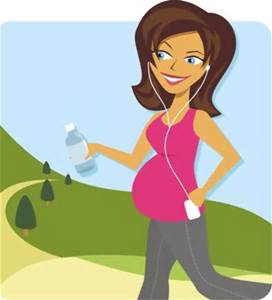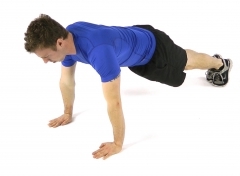Research regarding weight training during exercise can cause quite a controversy. Despite the controversey, there are a few tips that can help pregnancy women workout more safely and comfortably. I urge you to keep an open mind. After all, getting back into an exercise routine after you have a little one can be pretty tough.
1. Keep up your routine. Just be advised to lower the intensity, not working as vigorously . If you did not exercise before becoming pregnant, you need to make sure you get the green light by your doctor first.
2. Even though every pregnancy is different, and you may feel normal, only workout when you are feeling well. If for some reason you feel light headed, stop what you are doing and call the doctor. Even though you are already in shape, some things may be saying something different on the inside.
3. If you are trying to find exercises to strengthen your body, avoid doing exercises on your back. There are numerous Pilates and yoga DVD’s made for woman during your pregnancy to help with strengthening of your body. These can relax you and strengthen your abdominals which can lead to an easier delivery. Strengthening your abdomen is also great for helping with lower back pain! I mean, what woman doesn’t want a strong core to help support the little one.
4. If you want to work on cardiovascular fitness, opt for using the treadmill or elliptical. The elliptical is great if you have joint problems, because it is a low impact exercise. The treadmill is great too, because you can choose how fast, slow and the incline you want to accomplish that day.
5. Stay hydrated!!!!! Staying hydrated helps reduce swelling, constipation, braxton hicks contractions, nausea, bladder infections and even headaches!
6. The most important one: Listen to your body. Everyone has a different experience being pregnant. Even each pregnancy a woman has can be completely different. If you ever feel light headed or think you can not go anymore, do not chance it. Call your doctor and tell him or her how you are feeling.
Krystal Nelson








